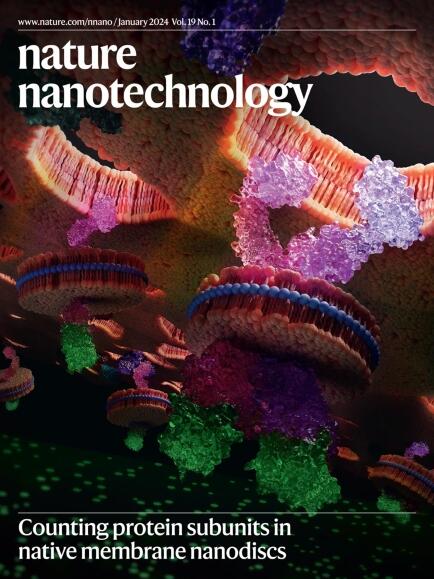发现用于肝巨噬细胞捕获的纳米颗粒冠状配体
IF 34.9
1区 材料科学
Q1 MATERIALS SCIENCE, MULTIDISCIPLINARY
引用次数: 0
摘要
肝巨噬细胞捕获循环纳米颗粒并减少其向靶器官的递送。给药后血清蛋白吸附在纳米颗粒表面。然而,吸附的血清蛋白及其同源细胞受体从血液中去除纳米颗粒尚未联系起来。在这里,我们使用多组学策略来鉴定与特异性肝巨噬细胞受体结合的吸附血清蛋白。我们发现六种被吸收的血清蛋白与两种肝巨噬细胞受体结合。纳米颗粒的物理化学性质可以影响六种血清蛋白吸附到表面的程度、与细胞受体结合的概率以及肝脏是否将纳米颗粒从循环中清除。确定六种吸附蛋白使我们能够设计诱饵纳米颗粒,使肝脏吸收更少的治疗性纳米颗粒,使更多的纳米颗粒靶向肝外组织。阐明控制纳米颗粒在体内旅程的分子相互作用将使我们能够控制纳米颗粒向病变组织的传递。本文章由计算机程序翻译,如有差异,请以英文原文为准。


Discovering nanoparticle corona ligands for liver macrophage capture
Liver macrophages capture circulating nanoparticles and reduce their delivery to target organs. Serum proteins adsorb to the nanoparticle surface after administration. However, the adsorbed serum proteins and their cognate cell receptors for removing nanoparticles from the bloodstream have not been linked. Here we use a multi-omics strategy to identify the adsorbed serum proteins binding to specific liver macrophage receptors. We discovered six absorbed serum proteins that bind to two liver macrophage receptors. Nanoparticle physicochemical properties can affect the degree of the six serum proteins adsorbing to the surface, the probability of binding to cell receptors and whether the liver removes the nanoparticle from circulation. Identifying the six adsorbed proteins allowed us to engineer decoy nanoparticles that prime the liver to take up fewer therapeutic nanoparticles, enabling more nanoparticles for targeting extrahepatic tissues. Elucidating the molecular interactions governing the nanoparticle journey in vivo will enable us to control nanoparticle delivery to diseased tissues. Liver macrophages are a major obstacle to extrahepatic drug delivery. This study identifies the receptor–ligand interactions that they use to capture circulating nanoparticles and leverages this understanding to engineer nanoparticles that escape macrophage uptake.
求助全文
通过发布文献求助,成功后即可免费获取论文全文。
去求助
来源期刊

Nature nanotechnology
工程技术-材料科学:综合
CiteScore
59.70
自引率
0.80%
发文量
196
审稿时长
4-8 weeks
期刊介绍:
Nature Nanotechnology is a prestigious journal that publishes high-quality papers in various areas of nanoscience and nanotechnology. The journal focuses on the design, characterization, and production of structures, devices, and systems that manipulate and control materials at atomic, molecular, and macromolecular scales. It encompasses both bottom-up and top-down approaches, as well as their combinations.
Furthermore, Nature Nanotechnology fosters the exchange of ideas among researchers from diverse disciplines such as chemistry, physics, material science, biomedical research, engineering, and more. It promotes collaboration at the forefront of this multidisciplinary field. The journal covers a wide range of topics, from fundamental research in physics, chemistry, and biology, including computational work and simulations, to the development of innovative devices and technologies for various industrial sectors such as information technology, medicine, manufacturing, high-performance materials, energy, and environmental technologies. It includes coverage of organic, inorganic, and hybrid materials.
 求助内容:
求助内容: 应助结果提醒方式:
应助结果提醒方式:


